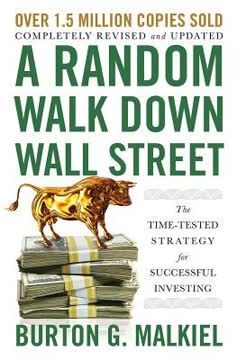Key Takeaways
1. Markets Efficiently Allocate Resources, But Not Always Equitably
The invisible hand usually leads markets to allocate resources efficiently.
Efficiency vs. Equity. Markets excel at efficiency, ensuring resources are used to produce what people want. However, this efficiency doesn't guarantee equity, or fairness in the distribution of those resources. A market economy rewards productivity, but it doesn't ensure everyone has sufficient food, clothing, or healthcare.
Market outcomes. The market's "invisible hand" guides resources to their most valued uses, but this process can lead to vast disparities in wealth and income. While efficient, the resulting distribution may not align with societal values of fairness.
Government intervention. This is where government intervention comes in. Policies like income taxes and welfare systems aim to redistribute economic well-being, addressing equity concerns that the market alone cannot solve. However, these interventions can reduce efficiency by distorting incentives to work and produce.
2. Externalities Distort Market Outcomes
An externality is the impact of one person’s actions on the well-being of a bystander.
Defining externalities. Externalities occur when an activity affects a third party who isn't involved in the transaction. These effects can be negative, like pollution from a factory, or positive, like the benefits a community receives from a neighbor's well-maintained garden.
Market failure. Because those creating externalities don't bear the full cost (negative) or reap the full benefit (positive), they tend to engage in too much or too little of the activity compared to what's optimal for society. This leads to market inefficiency.
Examples of externalities:
- A chemical factory emitting smoke (negative)
- A scientist making an important discovery (positive)
- Barking dogs disturbing neighbors (negative)
3. Private Solutions Can Sometimes Remedy Externalities
The Coase theorem says that private economic actors can potentially solve the problem of externalities among themselves.
Coase Theorem. The Coase theorem suggests that private parties can resolve externalities efficiently if they can bargain without cost. Regardless of the initial distribution of rights, they can reach a mutually beneficial agreement.
Limitations of private solutions. Private solutions are not always feasible due to:
- Transaction costs: The expenses of negotiating and enforcing agreements.
- Bargaining breakdowns: Difficulty in reaching a mutually agreeable solution.
- Coordination problems: Challenges in coordinating numerous interested parties.
Examples of private solutions:
- Moral codes and social sanctions
- Charities addressing specific externalities
- Contracts between parties affected by externalities
4. Government Intervention Can Improve Upon Market Outcomes
There are two broad reasons for a government to intervene in the economy: to promote efficiency and to promote equity.
Addressing market failures. When private solutions fail, governments can step in to correct externalities and promote efficiency. This intervention can take two main forms: command-and-control policies and market-based policies.
Command-and-control regulations. These policies directly regulate behavior, such as setting emission standards for factories or mandating the use of specific technologies. While effective, they can be inflexible and costly.
Market-based policies. These policies use incentives to align private interests with social well-being. Pigovian taxes, for example, tax activities that generate negative externalities, while subsidies encourage activities with positive externalities. Tradable pollution permits create a market for pollution rights, allowing firms to efficiently allocate pollution reduction efforts.
5. Taxes Impact Market Efficiency and Equity
Taxes distort prices and thus the decisions of households and firms.
Taxes as a necessary evil. Taxes are essential for funding public services, but they also come with costs. They distort market signals, leading to inefficient resource allocation and reduced economic activity.
Deadweight loss. The deadweight loss of a tax represents the reduction in total surplus (consumer and producer surplus) that results from the tax. This loss occurs because the tax discourages mutually beneficial transactions.
Administrative burden. In addition to deadweight losses, taxes impose an administrative burden on taxpayers, including the time and resources spent complying with tax laws.
6. Tax Incidence Reveals the True Burden of Taxation
The incidence of a tax does not depend on whether the tax is levied on buyers or sellers.
Beyond the surface. The legal assignment of a tax (whether it's levied on buyers or sellers) doesn't determine who ultimately bears the burden. Market forces adjust to distribute the burden between buyers and sellers.
Elasticity matters. The true burden of a tax depends on the relative elasticities of supply and demand. The side of the market that is less elastic (less responsive to price changes) bears a larger share of the tax burden.
Example of payroll tax:
- The law mandates that employers and employees split the tax.
- However, the actual burden falls mostly on workers because the supply of labor is less elastic than the demand.
7. International Trade Creates Winners and Losers, But Overall Gains
Trade can make everyone better off.
Comparative advantage. Trade allows countries to specialize in what they do best, leading to increased production and consumption possibilities. This specialization is based on comparative advantage, not absolute advantage.
Winners and losers. While trade benefits a country as a whole, it creates winners and losers within the country. Exporting industries and their workers gain, while import-competing industries and their workers lose.
Policy implications. Despite the overall gains, governments often face pressure to restrict trade to protect domestic industries. However, economists generally advocate for free trade, as the gains outweigh the losses.
8. Price Controls Distort Market Signals
When the government prevents prices from adjusting naturally to supply and demand, it impedes the invisible hand’s ability to coordinate the millions of households and firms that make up the economy.
Price ceilings and floors. Price controls, such as rent control and minimum wages, interfere with the natural forces of supply and demand. These interventions can lead to shortages, surpluses, and inefficient resource allocation.
Unintended consequences. Price ceilings create shortages, leading to rationing and black markets. Price floors create surpluses, requiring government intervention to manage the excess supply.
Examples of price controls:
- Rent control: Creates housing shortages and reduces housing quality.
- Minimum wage: Increases unemployment among low-skilled workers.
9. Public Goods Require Government Provision
Scarcity means that society has limited resources and therefore cannot produce all the goods and services people wish to have.
Non-excludability and non-rivalry. Public goods are neither excludable (people cannot be prevented from using them) nor rival (one person's use doesn't diminish another's). This makes it difficult for private markets to provide them efficiently.
The free-rider problem. Because people can enjoy the benefits of public goods without paying, they have an incentive to free ride. This leads to underproduction of public goods by the private sector.
Examples of public goods:
- National defense
- Basic research
- Public sanitation
Government intervention. Governments can overcome the free-rider problem by providing public goods and funding them through taxation. However, determining the optimal quantity of public goods requires cost-benefit analysis, which can be challenging.
10. Common Resources Suffer from Overuse
The management of society’s resources is important because resources are scarce.
Rivalry without excludability. Common resources are rival (one person's use diminishes another's) but not excludable (people cannot be prevented from using them). This creates a tragedy of the commons, where individuals overuse the resource, leading to its depletion.
The Tragedy of the Commons. This parable illustrates how individual self-interest can lead to the destruction of a shared resource. Examples include overfishing, pollution, and overuse of public lands.
Government solutions. Governments can address the tragedy of the commons through:
- Regulation: Limiting the use of the resource.
- Taxation: Imposing fees for using the resource.
- Conversion to private goods: Dividing the resource and assigning property rights.
Last updated:
FAQ
What's Principles of Microeconomics by N. Gregory Mankiw about?
- Economics Basics: The book introduces fundamental economic principles, focusing on how individuals and societies allocate scarce resources.
- Microeconomic Focus: It emphasizes microeconomic theories, exploring decision-making by individuals and firms and their impact on resource allocation.
- Real-World Applications: Mankiw uses real-world examples to illustrate economic concepts, making them relevant for understanding everyday economic issues.
Why should I read Principles of Microeconomics by N. Gregory Mankiw?
- Comprehensive Introduction: The book provides a thorough introduction to microeconomic concepts, suitable for beginners and those refreshing their knowledge.
- Critical Thinking Skills: It enhances your ability to analyze economic situations critically, encouraging readers to think like economists.
- Applicable Across Fields: The principles discussed are useful for various disciplines, including business, political science, and social sciences.
What are the key takeaways of Principles of Microeconomics by N. Gregory Mankiw?
- Tradeoffs and Opportunity Costs: Every choice involves tradeoffs, and understanding opportunity costs is crucial for informed decision-making.
- Market Mechanisms: The interaction of supply and demand determines prices and quantities in a market economy.
- Role of Incentives: People respond to incentives, significantly influencing behavior and decision-making in economic interactions.
What are the best quotes from Principles of Microeconomics by N. Gregory Mankiw and what do they mean?
- "There is no such thing as a free lunch.": Highlights the concept of trade-offs, emphasizing that every choice has a cost.
- "People respond to incentives.": Underscores the importance of understanding how changes in prices or policies can influence behavior.
- "Trade can make everyone better off.": Encapsulates the idea of comparative advantage, showing how specialization and trade lead to increased efficiency.
How does Principles of Microeconomics by N. Gregory Mankiw define elasticity?
- Elasticity Explained: Measures how much the quantity demanded or supplied responds to changes in price, quantifying consumer and producer sensitivity.
- Types of Elasticity: Includes price elasticity of demand, income elasticity of demand, and cross-price elasticity of demand, each serving different analytical purposes.
- Revenue Implications: Understanding elasticity helps predict how price changes will affect total revenue, crucial for businesses and policymakers.
What is the law of demand in Principles of Microeconomics by N. Gregory Mankiw?
- Inverse Relationship: States that as the price of a good falls, the quantity demanded rises, and vice versa.
- Demand Curve: Graphically represented by a downward-sloping curve, illustrating consumer reactions to price changes.
- Real-World Examples: Uses examples like ice cream prices to demonstrate how consumers adjust purchasing behavior based on price fluctuations.
How does Principles of Microeconomics by N. Gregory Mankiw describe supply?
- Definition of Supply: Refers to the amount of a good sellers are willing and able to sell at various prices.
- Supply Curve: Represented by an upward-sloping curve, showing the relationship between price and quantity supplied.
- Determinants of Supply: Includes input prices, technology, expectations, and the number of sellers, all of which can shift the supply curve.
What is market equilibrium in Principles of Microeconomics by N. Gregory Mankiw?
- Equilibrium Defined: Occurs when the quantity supplied equals the quantity demanded at a certain price, known as the equilibrium price.
- Market Forces: Prices are driven toward equilibrium by surpluses and shortages, which create pressure for price adjustments.
- Graphical Representation: Illustrated where the supply and demand curves intersect, clarifying how changes affect equilibrium.
How do taxes affect supply and demand in Principles of Microeconomics by N. Gregory Mankiw?
- Tax Incidence: Discusses how taxes can be levied on buyers or sellers, affecting market outcomes and sharing the burden.
- Shifts in Curves: A tax on buyers shifts the demand curve downward, while a tax on sellers shifts the supply curve upward.
- Market Reactions: Typically reduces the quantity sold, illustrating the unintended consequences of government policies.
What are price ceilings and price floors in Principles of Microeconomics by N. Gregory Mankiw?
- Price Ceilings: Legal maximum prices intended to make goods more affordable, but can lead to shortages if set below equilibrium.
- Price Floors: Legal minimum prices that can create surpluses if set above equilibrium, leading to market inefficiencies.
- Real-World Examples: Uses rent control and minimum wage laws to illustrate the effects of price controls on market outcomes.
What is the definition of an externality in Principles of Microeconomics by N. Gregory Mankiw?
- Externality Defined: Described as the uncompensated impact of one person’s actions on the well-being of a bystander.
- Types of Externalities: Includes negative externalities, like pollution, and positive externalities, like education.
- Market Inefficiency: Externalities cause market equilibrium to deviate from the socially optimal level of production or consumption.
How does Principles of Microeconomics by N. Gregory Mankiw explain consumer choice?
- Budget Constraints: Represents the combinations of goods a consumer can afford given their income and prices.
- Indifference Curves: Shows combinations of goods providing the same satisfaction level, representing consumer preferences.
- Optimal Consumption: Occurs where the budget constraint is tangent to the highest indifference curve, maximizing utility.
Review Summary
Principles of Microeconomics receives mixed reviews, with an average rating of 3.83 out of 5. Many readers praise Mankiw's clear writing style and ability to explain complex concepts simply. Some find it an excellent introduction to economics, while others criticize its oversimplification and perceived bias. Positive reviews highlight the book's relevance to real-world situations and its usefulness for students. Negative reviews mention inaccuracies and frustration with the material. Overall, the book is considered a solid introductory text, though opinions vary on its depth and accuracy.
Similar Books







Download PDF
Download EPUB
.epub digital book format is ideal for reading ebooks on phones, tablets, and e-readers.





